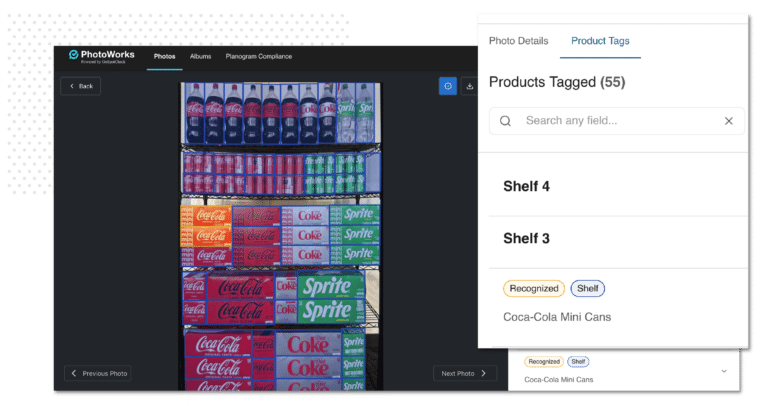Unfortunately, you can’t be in two places at once. But what if you could oversee every location in your business personally? You’d certainly know precisely what was going on throughout your company, but productivity would suffer because of your presence.
The truth is that breathing down your workers’ necks can stifle creativity and innovation. A 2011 psychological study showed that the feeling of being watched makes people less productive. However, you can’t simply leave everyone to their own devices. Striking a balance between watching each employee like a hawk and becoming an “armchair general” is undoubtedly tough.
The trick to making micromanagement a positive tool is to affect smart decisions without introducing an oppressive presence. The easiest way to do that is with automation tools, like a flexible data solution. Here are five ways these tools can help you find the right approach and make micromanagement a positive methodology in your organization:
1. Make Micromanagement Less Invasive
Ensuring brand standards are met is both vital for the success of any business and utterly impossible to do all on your own. For most distributed operations, like restaurant franchises, retail brands, and location-based services, each local manager’s understanding of those standards can vary wildly. This lack of clarity can drain resources, time, and efficiency in locations where managers unknowingly (or intentionally) contradict the standard operating procedures. But, for the same reasons, a company shouldn’t ignore beneficial outliers.
A 2009 study revealed that people greatly benefit from routine one-on-ones with their supervisor. More importantly, staying close to your employees gives you insights into their unique operations and approach. If a regional manager’s methods turn out to be more productive, everyone else should be following in their footsteps.
So, what does this mean for micromanagement powered by a flexible data solution? Instead of breathing down everyone’s necks, you can easily gather the clues, insights, and data you need to engage with the workers or managers who need some face-to-face time. This also applies to your managers: offering them digestible information through reports and dashboards gives them both frontline insights and a clear picture of what executives see.
The goal with all this data analysis is to nip problems in the bud and reward innovation. You’ll be able to show managers which metrics you use to judge their performance and how you want those numbers to change. This combination of closeness and distance is what makes customized mobile forms uniquely suited for micromanagement.
2. Ensure One Version of the Truth
Cloud-based mobile data collection technology makes it intuitive and straightforward to understand how each store, location, and outlet performs. You can even compare sales figures, audit results, and safety reports from one location against local, regional, and global numbers.
A forms automation solution helps you uncover trends and patterns so that you can focus on shoring up your business’ weak points. You can use cloud-based mobile forms to ensure “one version of the truth,” whether that means communicating brand quality standards clearly or keeping your forms consistent and easy to use.
Paper, spreadsheets, and inflexible form software only cover a fraction of what a modern business needs to get by. These methods might give you enough information to file monthly reports, but they merely scratch the surface when it comes to genuinely understanding that information. The biggest issue with these unwieldy solutions is that they lack scope and depth.
Regardless of your organization’s size, the ability to cross-tabulate data from different sources can be a significant edge. Instead of waiting days to collect paper forms or sorting through a spreadsheet for hours looking for a single, critical cell, you could have the reports right at your fingertips in an instant.
That gives you the agility and responsiveness to tackle issues before they escalate and reward innovation when it’s discovered. More importantly, it helps you place executive staff alongside regional management rather than behind them, finger-wagging and shouting directions. With timely and accurate data, you’ll be able to advise and consult rather than react and reprimand.
3. Turn Corrections into Teachable Moments
Critical training sessions no longer have to be hit or miss. Every failure or misstep can be an opportunity to teach, inform, and cultivate. Rather than pointing to a dusty book of brand standards, a mobile platform responds to red-flag issues in real time. In a retail scenario, that may look like a promotional display that isn’t set up correctly. When the in-store auditor enters this data, they receive an in-app prompt to correct the issue along with reference data that explains precisely how it should be done.
According to an Entrepreneur article by Stephane Kasriel, CEO of Upwork, companies simply don’t invest the time, resources, or attention in young workers that they used to. It’s a growing trend in which hiring managers evaluate the “return on investment” rather than the potential of new recruits.
But, as Kasriel explains, technology may have the answer for these training deficits. Where workers don’t find it themselves via online courses (or quitting outright and becoming a freelancer), you can supply it with reactive on-the-job coaching prompted by actionable data. Knowing where a location, employee, or region is falling behind gives you the opportunity to offer more resources, retain workers, and create a positive learning-based atmosphere.
With mobile data collection tools, a supervisor is automatically notified upon form submission so they can follow up with the responsible employee. Each time a failure is recorded, instead of punitive action or leveling blame, mobile data offers the opportunity to create teachable moments. Moreover, if an issue can’t be remediated at the moment, a mobile data collection platform can issue follow-up tasks to the responsible parties right away.
The burden of fostering growth should be shared by managers and employees alike. Identifying key personnel who want to learn and improve is essential to sustaining a strong business. Tools that allow you to cultivate employees capable of dealing with issues in the long-term will offer a much greater return on investment than a quick fix.
4. Integrate Management with Existing Data Tools
When it comes to selecting the right observational data collection and management solution, one size doesn’t fit all. Inflexible form software and apps exist in a vacuum, sequestered far away from your company’s unique challenges and goals. They’re built to satisfy the lowest common denominator, turn a profit, and little else. When it comes to integrating your current systems with a new mobile data solution, the product should be tailored to your specific needs.
Seek out companies with the industry know-how and professional services experience to build a product around your process—not the other way around. This is especially critical for companies that need to integrate the solution with an existing tech stack. It takes both a team of technical experts and enterprise-grade technology to create an end-to-end, bi-directional database that combines all your systems into one cohesive whole.
Most of your employees already own mobile devices like tablets and smartphones. Integrating your existing databases with a data collection solution makes it easy to implement a Bring Your Own Device initiative. That not only offsets the cost of purchasing new hardware but also saves time. According to a Frost & Sullivan survey, employees using their own smartphones to get work done save an average of 58 minutes each day. Better still, you can keep tabs on employees by reviewing the status and content of each form.
5. Reframe Micromanagement as a Positive Approach
Hybrid micromanagement through mobile data isn’t the “magic bullet” to solve your organizational woes. Often, there are areas where microscopic focus can’t help, like when the expertise is outside of your executives’ wheelhouse. Take, for example, J. Crew’s former CEO Mickey Drexler, who interviewed every corporate hire in the entire company. While he had a hands-on style of management in almost every respect, when it came to handling the IT department, he delegated the decisions. The truth is that micromanagement is neither an all-out good or bad thing. It’s about how you use it.
Jack Welch, CEO of General Electric, described micromanaging in a LinkedIn post entitled Why I Love Micromanaging and You Should, Too:
We all know jerk bosses who stick their nose into every little thing their people are doing, and basically try to drive the bus from the back seat. We also know perfectly good bosses who do the same kind of thing for a different and legitimate reason—because they know the people doing the real work aren’t yet ready to do it themselves.
When it comes down to brass tacks, most people would rather have a boss who micromanages to ensure success than one who does it to save face. When you reintroduce micromanagement in your organization, frame it as a positive, supportive tool rather than a means for preventing failure.
Start by engaging with regional managers both in face-to-face encounters and through thoughtful analysis of their numbers. Examine their individual strategies using mobile forms software to uncover who is innovating and who is falling behind. One manager’s unique outlook can have a lasting impact on your business for better or worse. The important thing is understanding how to identify good ideas and poor performance. Only reliable, real-time data can do that.
A Form.com solution can offer a happy marriage between breathing down your managers’ necks and resting on your laurels in an ivory tower. You can reinforce the macro-level decisions you make with observations gathered locally from workers. Form.com provides the scope and depth you need to garner a clear picture of what is going on in your business — no matter where you are.
Want to learn more about how Form.com can make micromanagement a positive tool for growth in your company? Get in touch with a solutions expert today.




